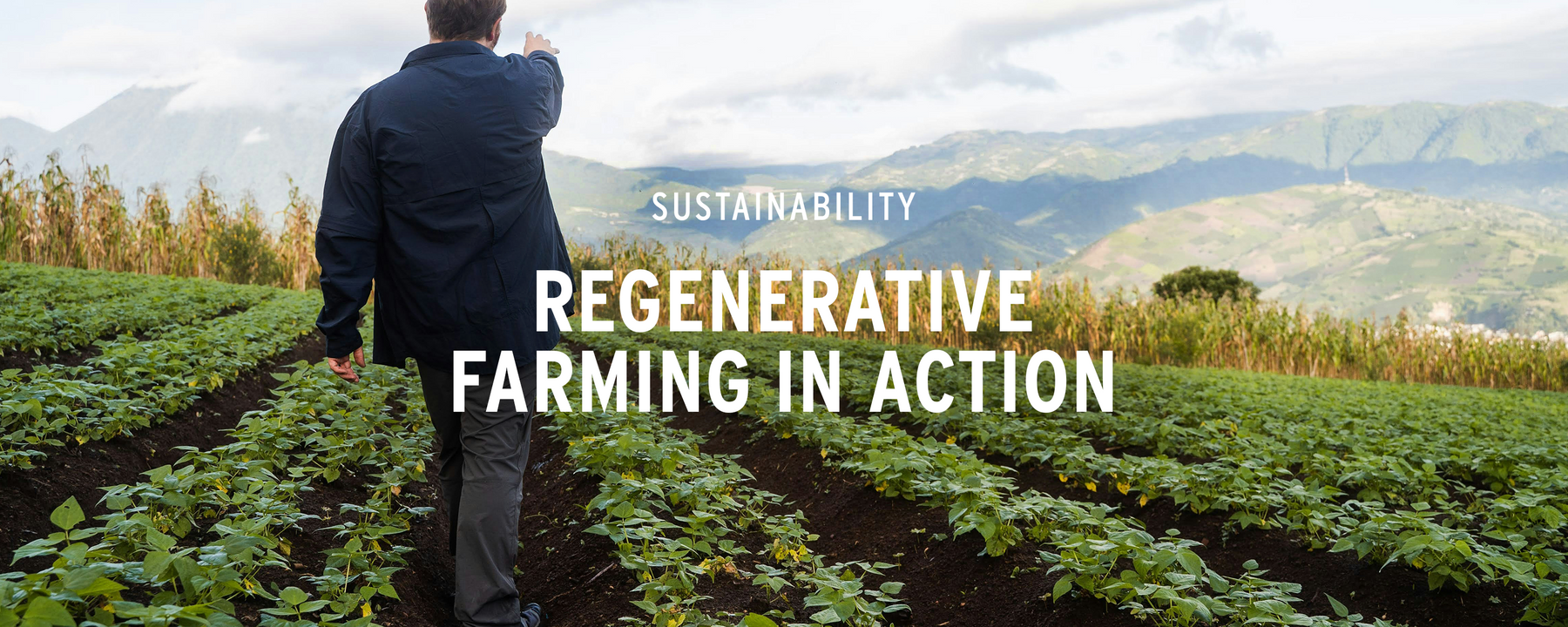
Regenerative Agriculture in Action
Guatemala Bella Vista
We have a longstanding relationship with the coffee mill and exporter Bella Vista, in Antigua Guatemala. Coffees from their various farms - Pulcal, San Juan and Bella Carmona - regularly feature on our Single Origin menu. Over the past three years Bella Vista has embarked on an exciting transition to Regenerative agriculture, and we are proudly offering our first selections from these efforts in 2024. (Link here)
I recently spoke with Melanie Herrera, who leads the sales and customer relations activities for Bella Vista. She provided updates on Bella Vista’s approach to Regenerative agriculture, as well as the opportunities and challenges it faces in the future.
Bella Vista was inspired to move towards Regenerative agriculture a few years ago, after seeing the limitations of high intensity conventional agriculture that relies heavily on external inputs. While it is true that coffee farming in Guatemala is done in a manner that incorporates shade, use of compost and other “sustainable” farming techniques, the reality is that many farmers have become overly reliant on chemical inputs that seek to increase yields, lower labor costs, and improve quality. These short term solutions can have long term consequences, such as depleted soils, lack of biodiversity and contamination of water. This reality is something that Bella Vista came to realize, inspiring them to change course.
While Bella Vista was having this epiphany, they were able to connect with the Soil Carbon Initiative, a non-profit organization in the United States that provides training and verification of Regenerative agriculture. There they learned about the fundamentals of Regenerative agriculture as it relates to:
- Soil health
- Biodiversity
- Water
- Elimination of Chemical inputs
For over two years now Bella Vista has been working on pilot projects on all its farms, including Pulcal, San Juan and Bella Carmona, as well as supply chains outside of its own farms. They are currently managing around 50% of their land under these projects and have partnered with another 20 small farms to help them with the transition to Regenerative. They are taking it slow and steady, preferring to see the results and learn from their mistakes on a manageable scale, before expanding their efforts to the rest of their acreage. The rebuilding of soils and ecosystems takes around three years, so this coming year will be telling in terms of how much progress they have made.
The challenges Bella Vista faces are multiple, including the cost and availability of labor to implement Regenerative agriculture. At the beginning stages of a Regenerative agriculture program more labor is required, while over time the idea is that the ecosystem comes into balance and labor can be reduced. To give an example, where in the past an herbicide may have been used to clear weeds once a year, manual cutting now happens three times a year – a substantial increase in labor. Over time, though, healthier soils and the addition of cover crops will push out weeds, reducing the labor needed to clear weeds manually.
Another challenge is reduced yields in the short term, a reality organic farmers face as well in their initial transition. This can be expensive for an operation seeing costs go up at the same time. For smaller farms that operate hand to mouth, this can be too much to bear without some sort of subsidy, while for Bella Vista, it is a variable they have been able to absorb, with the understanding that yields will go up over time.
Despite these challenges, Melanie and the owner of Bella Vista, Luis Pedro Zelaya, are committed to making a full transition to Regenerative agriculture over the next two to three years and expanding their network of like-minded farms in Guatemala. We at 49th see Bella Vista as the stewards of a brighter future for specialty coffee – balancing excellent quality and environmental sustainability on a whole new level – and are excited to be partnering with them as they make this transition.
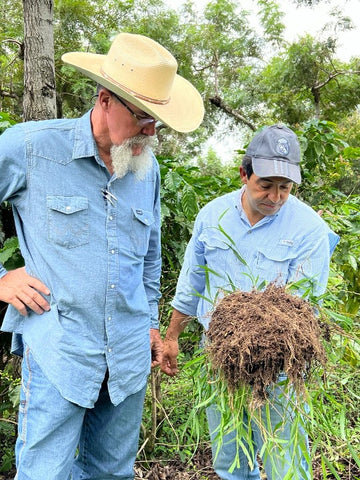
Checking roots and aggregates

Sharing what we have learned and experienced with our partner small producers
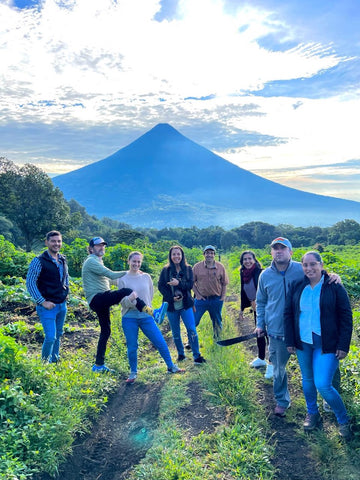
Sharing the knowledge with our community to raise awareness on how important it is to understand how your food is grown
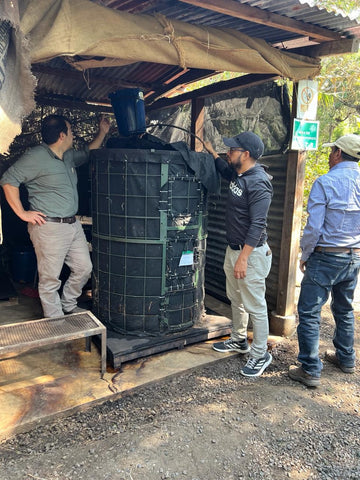
Reproducing our own and local microorganisms
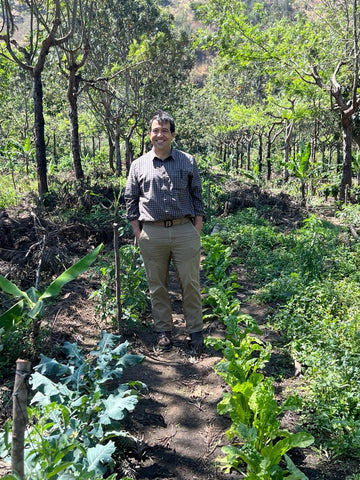
Producing more food in the same area plus adding diversity to farms
Regenerative Question and Answer:
1. What prompted you to start regenerative farming?
After a couple of tough years with low harvest yields, plague, and disease challenges, rising coffee prices, and the threat of climate change, you have to wonder if the approach we were taking was the right one. We have been very diligent, but we have not received the expected results. Around that time, we met some friends who discussed soil health, and we immediately took an online course. From there, we began learning about soil health, regenerative agriculture, nutrient dense foods, and wellness, and our path (and mindset) changed immediately.
2. What does this mean to you and your community?
We aim to gradually transition all our land from conventional agriculture to regenerative practices. This means we are committed to producing coffee and other fresh produce using new practices that work with nature rather than against it, with the goal of regenerating ecosystems and cycles (water, nutrients, carbon), as well as practices that help to reverse climate change and sequester carbon. Our community will benefit from access to nutrient-dense food through Regenerative Agriculture. We encourage them to learn more about its importance and benefits, particularly for health and wellness.
3. What are the challenges that come with regenerative farming?
Well, the first is a shift in mindset. It is diametrically opposed to everything we are used to. The second challenge is determining how to complete the transition. According to our understanding, it could take three years to get to a soil with better conditions to sustain an ecosystem, and while we get there, the reduction in the use of synthetic inputs requires a lot more labor to manage forbs, plagues/diseases, and nutrition until we reach an optimal stage. As you are aware, we have a labor shortage in our area, so this is a significant challenge for us. The third challenge is patience. Regenerative Agriculture requires patience as the ecosystem takes time to return to its natural rhythm, contrary to our desire for immediate results. The fourth one is an open mind that is eager to learn new things. There is no recipe, and once you have some basic principles, you must figure out how to apply them to your specific situation. So, you need to be creative, learn quickly from failure, and get back on your feet.
4. Does regenerative farming impact coffee quality?
We believe this. And we believe it will be for the best. In terms of nutrition, yield, and cup quality. Even just keeping to our usual high quality without relying on synthetic inputs is a win. However, we are gathering data to provide more information on this.
5. Are there any words that you want to share with the specialty coffee community?
As we've heard, if you know the hand that produces your food, you're buying in the right place. Keep this thought in mind whenever you decide to buy some food. Even more so when you're buying coffee. We consider it an honor and privilege to improve how we serve our customers and friends. We want to produce the best coffee we can and share it with you.
